Get to Know Shakespeare (And Every Play He Wrote)
Want to get acquainted with Shakespeare and gain a working knowledge of his plays? Here’s your guide to all thirty-eight Shakespeare plays, with summaries for each one. You can also take the Shakespeare reading challenge, if you want to be super ambitious and read through the Bard’s plays in a year!
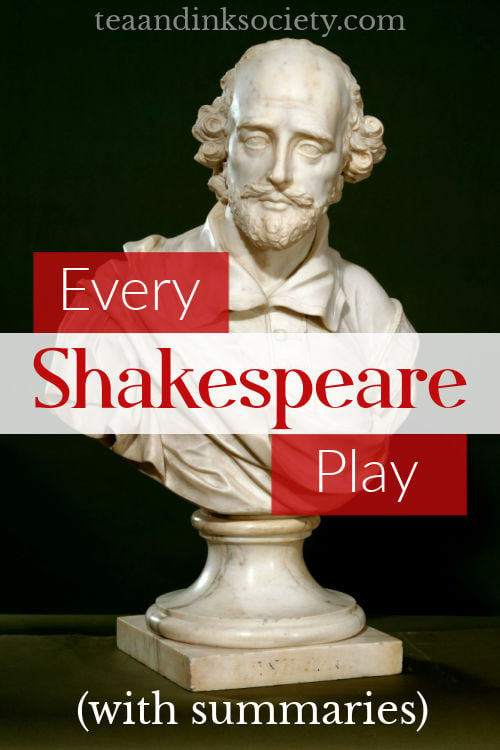
The lecture was over and it was time for questions. Someone a few rows behind me raised their hand, and I could hear their unmistakable New Zealand accent:
“What is it that makes Shakespeare so great?”
The lecturer laughed outright, and there were echoed chuckles from around the room. It was such a broad question, with so many ways to answer. (Not to mention the lecture hadn’t even been about Shakespeare specifically.)
I remember the question, but I don’t remember the lecturer’s answer.
No doubt she said something about the way Shakespeare is able to portray universal human quandaries and desires, capturing the human condition in a way that transcends boundaries of time and place. Perhaps she quoted Ben Jonson here by saying he was “not of an age, but for all time.” She might’ve mentioned Shakespeare’s witty language, his use of semantics and meter, or the way his plays run the spectrum from uproariously funny to downright horrific. If she had had more time she would’ve delved into Shakespeare’s clever reworking of source material, which has added yet more endless layers to the way we discuss him. And she probably did point out the fact that his characters and their motivations are still the subjects of highly-charged debate, centuries later; in fact, that nearly everything surrounding this man and his plays is an ongoing conversation.
I don’t remember her answer, but I remember the question.
And I think that’s telling, because people have been asking “What is it that makes Shakespeare so great?” for hundreds of years, and probably will be for hundreds more. We can’t encapsulate genius, but it’s our privilege to engage in its expansiveness.
A Few Biographical Notes About Shakespeare
William Shakespeare was born in Stratford-upon-Avon, England in 1564. He married Anne Hathaway when he was eighteen, and the couple had three children: first Susanna, and then twins Hamnet and Judith. (Hamnet died at age eleven, but the girls reached adulthood and had families of their own.) Sometime in his late twenties, Shakespeare moved to London to pursue his acting and playwriting career. He made visits back to Stratford, but his family did not relocate to London with him.
During his twenty year stint working in London, Shakespeare was very prolific, writing thirty-eight plays. (This number includes some he collaborated on with other playwrights.) In addition to plays, he also published 154 sonnets.
There were two monarchs during Shakespeare’s lifetime–first Queen Elizabeth I, daughter of Henry VIII, and then King James I, son of Mary, Queen of Scots. Both of them enjoyed theater and saw many of Shakespeare’s plays.
Around 1613, Shakespeare decided to retire from writing. He left London and moved back to Stratford to be with his family and manage his financial interests, which had grown considerably with his success as a writer. Unfortunately, his retirement was short-lived; he died just three years later on April 23, 1616 (incidentally, the same day that we celebrate his birthday).
List of Every Shakespeare Play, with Summaries
Shakespeare was already recognized for his genius by his contemporaries, and in 1623, two of his friends edited and published the famous First Folio, a collection of thirty-six Shakespeare plays (absent are Pericles and The Two Noble Kinsmen). The plays were divided into Comedies, Tragedies, and Histories in the First Folio, and that division is largely maintained today. Here’s a quickstart guide to all thirty-eight Shakespeare plays.
Shakespeare’s Comedies
Because it’s hard to pin down the exact date when Shakespeare’s plays were first penned, published, or performed, I haven’t attempted to put these in chronological order. Instead, you’ll find them alphabetically listed so you can browse them quickly if you’re looking for a specific play.
You can tell a comedy play by the way it ends. If it ends in a marriage, in bad things reversed, or a villain getting their comeuppance (or receiving pardon), you’re looking at a comedy.
All’s Well That Ends Well
The cheery title of All’s Well That Ends Well belies a problematic love story based on a tale from Boccaccio’s The Decameron. It starts with a typical tale of unrequited love–in this case, the lowly orphan Helen is in love with a countess’s son, a man far above her in rank. But love remains unrequited, and Helen must resort to tricks and cunning if she wants to snag her man.
As You Like It
As You Like It is a pastoral comedy, set primarily in a vast forest where various lords, princesses, servants, and a duke have taken refuge from the machinations of the court. Away from political drama, the forest provides plenty of drama of a different nature, as the characters find themselves tangled in love. Several country folk get swept up into the story, and characters don disguises, fall for the wrong people, argue, and finally sort it all out “in true delights.”
The Comedy of Errors
The Comedy of Errors is the farcical story of identical twin brothers who were separated as infants, and are both named Antipholus. To make matters more confusing, there’s another set of separated identical twin brothers, each a servant to an Antipholus, and they are both named Dromio. One of the Antipholus brothers travels from Syracuse to Ephesus in search of his twin. Once there, he discovers that many people know his name and his face–but of course, they think he’s his brother. With an utter confusion of names and faces, absolute chaos ensues.
Love’s Labour’s Lost
Embarking on a stringent self-improvement plan, the king of Navarre and his three companions vow to withdraw from the world for three years, committing themselves to studying and fasting, and swearing off all contact with women. A wrench is thrown into their plans when the Princess of France and her three ladies-in-waiting come to pay a visit. They are ordered to camp a mile outside the court, but the men’s feelings soon get the better of them, and they each fall in love with a different lady. A flurry of love letters and poetry ensues, but in the end the women will have the final say.
Measure for Measure
Like All’s Well That Ends Well, Measure for Measure is one of Shakespeare’s “problem plays”; a story where things come right in the end (more or less), but the play’s tone and content is a mix of levity and moral or social ambiguity. In Measure for Measure, the ambiguity centers around the brothels and dissolute living rampant in Vienna. The Duke, instead of directly intervening in the lives of his citizens, pretends to leave town, putting the dictatorial Angelo in his place to clean things up. Angelo ostensibly enacts justice, but reveals his own lechery on the side. As problems pile up, it will take some serious Duke ex machina to put justice and mercy back in balance.
The Merchant of Venice
Needing money in order to court his beloved Portia, Bassanio applies to his best friend Antonio, who agrees to take out a loan on Bassanio’s behalf. Their moneylender is the Jew Shylock, who instead of interest will claim a pound of Antonio’s flesh if Antonio is unable to repay the loan. As you might expect, the loan comes due and Antonio can’t pay it. Bassanio, on the other hand, now has plenty of money and offers to double the amount due. But Shylock has deeply personal reasons for insisting on a pound of flesh, and they’ll need a very clever lawyer indeed to save Antonio’s life.
The Merry Wives of Windsor
The fat and rascally knight Sir John Falstaff comes to Windsor in dire financial straits, and decides that the best way to shift his prospects will be to seduce two local women who are in possession of good fortunes–but are not in need of husbands, being already wed. The women catch wind of Falstaff’s plans, and make him the brunt of various practical jokes. Question is–will their husbands appreciate the humour, and do the men trust the fidelity of their wives?
Falstaff was a recurring character for Shakespeare, appearing also in Henry IV, parts 1 and 2, and getting a mention and arc conclusion in Henry V. Several of Falstaff’s cronies in The Merry Wives also appear in the Henriad plays.
A Midsummer Night’s Dream
Similar to As You Like It, most of A Midsummer’s Night’s Dream occurs in a forest, but this forest is the realm of Fairy Land, and this play is one of Shakespeare’s few forays into fantasy. Frustrated in love, four young Athenians leave the civilized city to change their fate in the forest. Unbeknownst to them, Oberon and Titania, king and queen of the fairies, are having their own problems. In the midst of their quarrel, Oberon and Titania begin to meddle in the love affairs of the mortals, which become increasingly tangled when a band of hapless performers also enter the forest to practice their upcoming play.
Much Ado About Nothing
Much Ado About Nothing contains two of the most enduringly popular romance tropes: love at first sight and enemies to lovers. Between these two tropes there’s plenty of lovesickness, banter, and matchmaking among the play’s two main couples and their friends. Suddenly, things take a serious turn when a bitter antagonist slanders an innocent woman, and it appears that happiness and life itself may be at stake.
Pericles
Pericles is an unusual play because it was not included in the First Folio–or collection–of Shakespeare’s plays, published in 1623. The main reason for this is likely that Pericles is a collaborative work; Shakespeare probably wrote only about half of the play.
Pericles is a nautical story like Homer’s Odyssey–an adventure tale of sea voyages and shipwreck, pirates, tournaments, love and loss. Pericles, prince of Tyre, is the hero of the story, who must navigate many tides of fate before he finds his happy ending.
The Taming of the Shrew
The Taming of the Shrew features the two Minola sisters–the strong-willed and shrewish Katherina, and her sweet-natured younger sister Bianca. Many suitors vie for Bianca’s hand in marriage, but the girls’ father has decreed that no one can marry the younger sister until the elder is wed. Bianca’s admirers work together to press their suit, donning disguises to gain access to the Minola household and even convincing a friend to court Katherina. Katherina’s suitor doesn’t mind a challenge, and sets about proving that he can “tame” her to be a suitable wife.
The Tempest
Storm and shipwreck, an enchanted isle, an exiled magician and his lonely daughter; The Tempest is a Romance and another of Shakespeare’s plays in the fantasy genre. Prospero is the rightful Duke of Milan, but has been stranded on a remote island for twelve years after he was ousted from political power. While on the island, Prospero practices power of a different kind. When fate brings his enemies right to his shore, Prospero and his fairy servant Ariel conjure a storm so he can finally exact his revenge.
Twelfth Night
After losing her twin brother during a shipwreck, Viola goes ashore and disguises herself as a man, entering the service of Duke Orsino as his new page boy, Cesario. The duke sends Cesario to plead his case with countess Olivia, who like Viola is also grieving the recent loss of a brother. Rather than return the duke’s affections, Olivia soon falls in love with “Cesario”; meanwhile, Viola/Cesario is herself in love with the duke! Love provides a distraction from loss, but can the players unravel their romantic tangles so that they can move forward in life?
The Two Gentlemen of Verona
In what may be Shakespeare’s first play, two immature young men seek to make their way in the world, but when faced with affairs of the heart, one man will prove a hero and the other a villain. Valentine leaves home first, traveling to Milan where he is later joined by his best friend Proteus. Proteus has left behind his sweetheart, Julia, but in Milan both men fall in love with the duke’s daughter, Silvia. Proteus betrays Valentine to the duke, who banishes Valentine for daring to aspire to his daughter. In his banishment, Valentine becomes king of the outlaws of the wood, and eventually, all of the players will enter his kingdom.
The Two Noble Kinsmen
Co-written by Shakespeare and John Fletcher, The Two Noble Kinsmen is a retelling of Chaucer’s “The Knight’s Tale,” which was itself a retelling of a poem by Boccaccio. In the story, two cousins and best friends are imprisoned after their uncle the king is defeated in battle. From their prison window, the cousins see the beautiful Emilia and both fall instantly in love with her, vowing to fight each other to the death in order to claim her (despite the fact that she doesn’t know they even exist). The cousins are soon separated, but circumstances may one day grant their wish after all.
The Winter’s Tale
Like many of Shakespeare’s later works, The Winter’s Tale covers a long span of time. The first three acts follow the undoing of Leontes, king of Sicily, a jealous man who accuses his wife of conceiving a child with his erstwhile friend, the king of Bohemia. Leontes orders that his wife’s baby daughter be abandoned far from home. The final two acts jump forward sixteen years in the future, revealing the fate of the abandoned girl and the state that Leontes’s actions have brought him to.
Shakespeare’s Tragedies
The tragedies include a number of historical figures, but Shakespeare takes significant creative license with them. This, combined with the downward trajectory of the protagonists and the body-strewn final acts mark these plays as tragedies, which are listed below in alphabetical order.
Antony and Cleopatra
Based on historical events, Antony and Cleopatra dramatizes the love affair between Cleopatra of Egypt and Mark Antony of Rome. Antony is part of a Triumvirate of leadership with Lepidus and Octavius Caesar, and his romance is often at odds with the politics of the two empires of Egypt and Rome. The play scene shifts between the two countries, and Shakespeare uses linguistic shifts as well to contrast the culture and the ethos of each. A naval battle that occurs geographically between the two countries is the dramatic turning point of the play, steering everything towards a tragic ending for the lovers.
Coriolanus
After winning a victory for the Roman Republic, general Caius Martius quickly gains favor and is given the nickname “Coriolanus.” On the heels of his success, his mother urges him to run for consul, a high-ranking official. But Coriolanus’s pride and lack of political suavity get him banished from Rome instead, leaving the fallen hero to vow revenge against his enemies and the Republic itself.
Cymbeline
Set in ancient Britain before its conquest by Rome, the play opens with a family crisis in the household of King Cymbeline. Cymbeline’s daughter Imogen has secretly married Posthumus, a commoner. Cymbeline is deeply distressed by this because his daughter is heir to the throne, and he wants a purebred bloodline. The king refuses to acknowledge the marriage and has Posthumus banished. Meanwhile, his new queen has darker schemes in mind as she plots a different marriage for Imogen and prepares a deadly poison.
Although Cymbeline was classified as a tragedy in the First Folio, it includes elements of comedy and is more thematically similar to Shakespeare’s other Romance and adventure plays like Pericles and The Tempest.
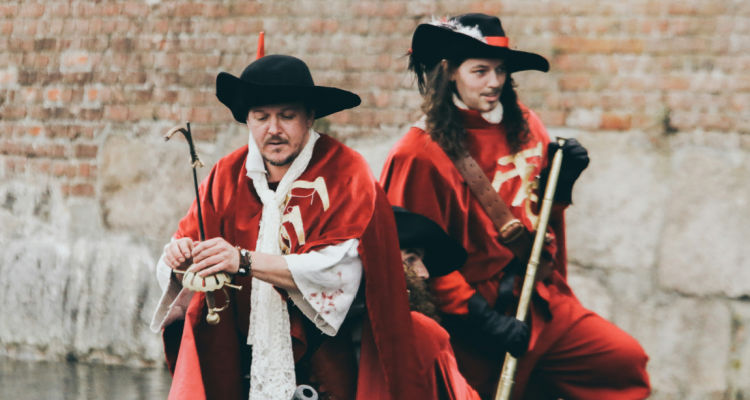
Hamlet
Shakespeare’s longest play, Hamlet is also his most ambiguous. Is Prince Hamlet of Denmark feigning madness–as he said he would–in order to expose his father’s murderer? Or does Hamlet’s grief and quest for vengeance actually drive him insane? One thing is certain, in this complex play sin begets more sin, creating a web from which it may be impossible to break free–even for the hero.
Julius Caesar
Formerly part of a triumvirate of rulers, Julius Caesar has gained sole power after the death of one ruler and the military defeat of the other. As he celebrates his victory, Senator Cassius, wary of Caesar’s dominance, works in the shadows to set in motion an assassination plot. Cassius wants to recruit an important player on his side–Brutus, Caesar’s own friend. Brutus has reservations but eventually agrees, provided the conspirators spare Mark Antony, Caesar’s general–a reprieve that will carry unexpected ramifications.
King Lear
Entering his sunset years, King Lear of Britain decides to preemptively divide his kingdom among his three daughters. Lear’s two elder daughters flatter him and pretend they love him in order to gain advantage, but his youngest daughter, whom he calls Cordelia, insists on simple honesty. Doubting Cordelia’s love, Lear banishes her, only to discover that his other daughters have turned on him, and everything he thought he had and was, is slipping through his fingers.
Macbeth
Set in Scotland, the play tells of Macbeth, a loyal general who rethinks his allegiance to the king when three witches prophecy that he will ascend to the throne. Gradually, Macbeth becomes convinced that the only way to fulfill the prophecy is to murder King Duncan himself. Back at Macbeth’s castle, Lady Macbeth is sure that her husband will lack resolve to do the deed, so she calls on the powers of darkness to fill her with the cruelty needed to see it done.
Macbeth is considered Shakespeare’s darkest play, and as if to allay its gloom for the audience, it’s also the shortest of all his tragedies.
Othello
Brabantio, a Venetian senator, is dismayed to learn that his daughter Desdemona has secretly married the noble Moorish general Othello. This information is brought to him by Iago, a soldier whom Othello has recently passed over for promotion. Desdemona assures her father that there was no compulsion–she truly loves Othello. On the heels of this confrontation, Othello is sent to Cyprus to fight the Turks, and Desdemona sails with him. But the resentful Iago is part of the contingent, and he knows that the surest way to get revenge is to destroy Othello’s love.
Romeo and Juliet
Romeo and Juliet is the story of the Capulets and Montagues–two Italian families locked in a violent feud. When Romeo Montague sneaks into a Capulet ball, he meets and falls in love with Juliet, daughter of the Capulet patriarch. A kindly friar helps the pair to marry in secret–hoping their union will heal the rift between the two families. Little does he know what the price will be for such a hope.
Timon of Athens
Timon is a wealthy gentleman who gives indiscriminately to his parasitic friends. He throws lavish banquets, pays others’ debts, patronizes artists, and bestows gifts to a ridiculous extent. Suddenly it all comes crashing down when Timon learns that he is bankrupt–and none of his supposed friends will return a single favor. In a fury, Timon bitterly denounces mankind and flees to the wilderness to live with the beasts and nurse his hatred.
Titus Andronicus
This multiple-revenge tragedy tells of a Roman general who returns from a ten-year campaign fighting the Goths. Titus is victorious, but the cost of war includes the death of many of his own sons. Titus has brought home Tamora, queen of the Goths, as captive, and lets one of her sons be sacrificed as payment for his own losses. But everything is far from settled–Tamora marries Saturninus, the new Emperor of Rome, who had initially promised to marry Titus’s daughter. Meanwhile, Tamora’s lover is also among the captives of war. The characters’ fiercely competing interests ignite a cycle of violence that escalates and sweeps the innocent into its tide.
Titus Andronicus is Shakespeare’s bloodiest play, not just for a high body count but for the type of violence, which is so gratuitous and over-the-top gory that some critics have claimed the play is a parody.
Troilus and Cressida
Troilus and Cressida is Shakespeare’s retelling of Homer’s Iliad, with a medieval chivalric romance thrown in. It’s year seven of the Trojan war, and Troilus, a younger son of King Priam of Troy, is in love with Cressida (a Trojan woman who does not appear in Homer’s poem). Cressida is sent to the Greek camp as part of a hostage exchange. There she meets Diomedes, who promises to take care of her but intends to seduce her instead. Troilus overhears Cressida’s infidelity to him and is devastated, but his personal problems are overshadowed by the larger events taking place.
Shakespeare’s Histories
Shakespeare’s history plays contain two major tetralogies. The first tetralogy includes the three Henry VI plays and Richard III, which cover the War of the Roses period in English history. The second tetralogy–written later but set in an earlier time period–includes Richard II, Henry IV parts 1 and 2, and Henry V. Although Shakespeare did not always write his history plays in chronological order, I’ve arranged them that way below for clarity since the royal timeline can get rather confusing (at least for this American reader!). At the very least, it’s a good idea to read each tetralogy as a set, even if you start with the first tetralogy and then jump back in time.
It’s also worth remembering that Shakespeare took dramatic liberties with timelines and personalities. Sometimes, the way he portrayed these characters worked into the popular imagination and influenced peoples’ perception of the historical figures for centuries afterwards. Such is the power of art!
King John
Richard the Lionheart (Richard I) is dead, and his younger brother John is now on the throne. Anglo-French tensions are growing, with the French supporting John’s boy nephew Arthur as the rightful claimant to the English throne. As war breaks out with France, Arthur is captured and John orders that he be tortured and executed. John’s troubles stack up from here: he loses trust with his nobles, angers the Catholic church, and learns that his mother Elinor of Aquitaine is dead, throwing his French territories in jeopardy. The play culminates in a confusion of battles, shifting allegiances, and death.
Richard II
Richard II highlights the conflict between King Richard (son of the Black Prince) and his cousin Henry Bolingbroke, who would later be King Henry IV. Richard quickly displays an inability to rule well, failing to effectively arbitrate a dispute between Bolingbroke and another noble. Bolingbroke ends up exiled, and in his absence Richard seizes his lands and inheritance to finance a war in Ireland. This angers a faction of the nobles, who help Bolingbroke to return and assemble an army of the people. As Bolingbroke moves against Richard, Richard begins to fall apart, gradually losing his kingly appearance and even his mind.
Henry IV Part I
If he could have his way, King Henry wants to make a crusade to the Holy Land, but duty and political unrest keep him home. As a group of noblemen plot to contest the throne, Henry faces family problems, too–his son Prince Hal is living a dissolute and carefree lifestyle, seemingly insensible to the fomenting rebellion. Scenes of political escalation are interspersed with comic scenes where Hal visits an Eastcheap tavern and plays tricks on his friend Sir John Falstaff. The play’s principal characters finally all meet at the climactic Battle of Shrewsbury, where Prince Hal may finally see his chance to prove himself a worthy heir to the throne of England.
Henry IV Part II
Shakespeare’s sequel to King Henry IV, part 1 picks up directly after the Battle of Shrewsbury. Although he won a victory, King Henry faces further opposition as the rebels reband and new insurgents join the cause. Meanwhile, Prince Hal’s abilities to rule are thrown back into question as he returns to his former profligate lifestyle. The king separates his son from the influence of Sir John Falstaff, sending Falstaff on a mission to gather more troops. With both his kingdom and his heir in question, the king sickens, longing for civil peace as he moves into old age.
Henry V
Prince Hal has now fully stepped into his role as King Henry V. His Eastcheap companions mourn the loss of their fun loving friend, but Henry has taken on his father’s mantle and even seeks to expand his dominion, laying claim to the throne of France as well. King Henry leads a campaign into France, and although the English troops are outnumbered, Henry stirs them to heroism and patriotic fervor.
Henry V is one of Shakespeare’s strongest history plays. Not only does it further develop the impressive character arc and growth of Prince Hal from the Henry IV plays, but it explores the complexities of war and the nuances of a political marriage between Henry and Katherine, the French princess.
Henry VI Part I
Shakespeare’s three Henry VI plays follow the events of the War of the Roses. King Henry V has died unexpectedly in his prime and his young son is now a child king, with the political power stewarded by his uncles. England’s French territories won by Henry V are in dispute, and a new French military leader, Joan la Pucelle (otherwise known as Joan of Arc) has risen to take back France. There’s also infighting among the English nobles vying to control the throne, who encourage their followers to wear red or white roses to symbolize their allegiance to one faction or the other. The play ends with an uneasy peace, but the stage is set for further conflict.
Henry VI Part II
With the largest cast of any Shakespeare play, Henry VI, part 2 continues to trace the growing tensions between the House of York and the House of Lancaster, of which King Henry is part. The young and sickly king is surrounded by dubious allies: his new wife, Queen Margaret, has a lover pulling the strings from behind. His trusted advisor, the Duke of Gloucester, is married to a woman who wants to be Queen herself. And in the chaos of political assassinations and a rebellion in Ireland, the Duke of York sees his opening to wrest the throne from Henry, meeting the king’s troops in the Battle of St Albans.
Henry VI Part III
Henry VI, part 3 is packed with battles and ever-shifting power, as the War of the Roses is in full swing. After defeating Henry and the House of Lancaster in battle, Richard, Duke of York, comes to an agreement with Henry that he will be king after Henry’s death. Queen Margaret, angry that her son Edward has been disinherited, raises an army of her own to fight the Yorkists. Multiple battles ensue, with the crown passing back and forth as various players in the drama are killed on the battlefield or murdered. As the play ends one house seems to have won a decisive victory, but the traitorous Richard is plotting from within, and only the audience knows his plans.
Richard III
In Richard III, Shakespeare creates his most villainous king, and one of his most memorable villains in his entire oeuvre. Although the real Richard may not have been so vile, Shakespeare creates a man who will stop at nothing to control the kingdom, soliloquizing to the audience his intentions to murder and deceive, and drawing attention to his physical deformities which have hardened him to the world.
Richard, a Yorkist, is not yet king, but to gain political power he manipulates Lady Anne into marrying him, despite having murdered both her father and husband. As King Edward IV sickens and dies, Richard targets his other brother, then his two young nephews, then his own wife Anne. Richard at last gains the crown, but his rule is quickly terminated at the Battle of Bosworth Field, which–happily for England–also finally terminates the War of the Roses.
Henry VIII
Another play co-written by Shakespeare and John Fletcher, Henry VIII is set in the not-too-distant past for its original audience, as it ends with the christening of the infant Elizabeth, the future queen. Unlike the other Henry plays, this one contains no battle scenes; nevertheless, the court is still in crisis.
The nobles are plotting against Cardinal Wolsey, the king’s right-hand man, who is manipulative and abuses the tax system for his own political schemes. Meanwhile Henry, under the Cardinal’s influence, begins to question the legitimacy of his marriage to Queen Katherine. He meets and falls in love with Anne Bullen at a party, and wants to make her the new queen. In contrast to Cardinal Wolsey, Queen Katherine is a paragon of integrity, advocating for herself and for the people and remaining loyal to the king despite being deposed.
What are your favourite Shakespeare plays? Which Shakespeare characters do you love or loathe? And what Shakespeare plays do you want to read next?
Read Every Shakespeare Play in a Year
I might be crazy, but I’ve decided to attempt to read every Shakespeare play over the course of 2025! Are you crazy, too? Let’s do it together! I’ll be in touch later (hopefully before Christmas!) with a reading order and other things to get us started. Please fill out the form below to get in on the fun. If the form isn’t displaying for you, refresh the page or send me an email at elsie [at] teaandinksociety.com to express your interest.


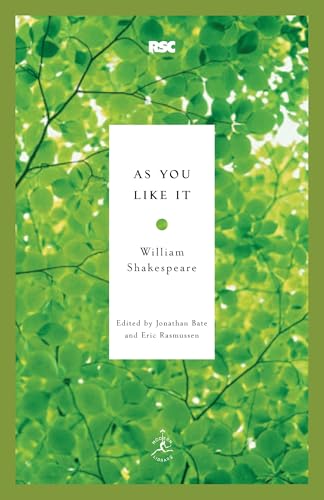
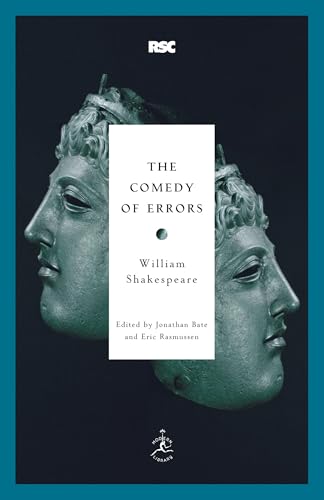
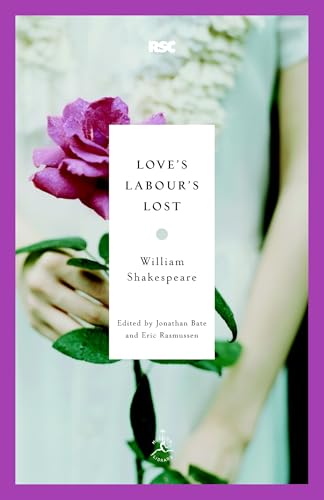

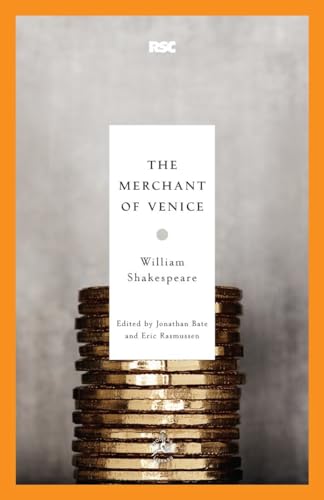
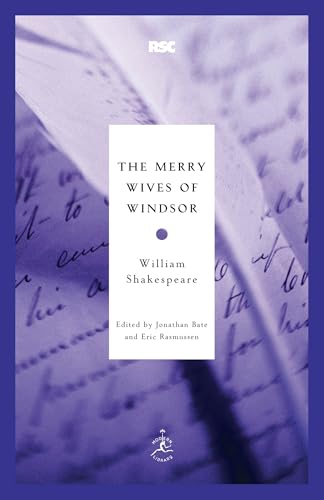
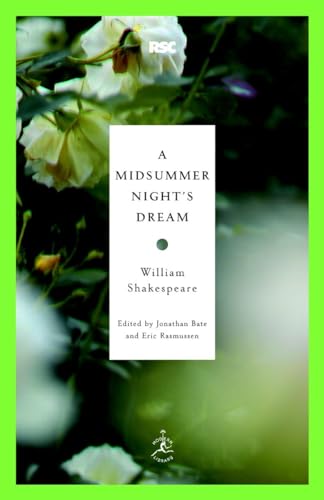

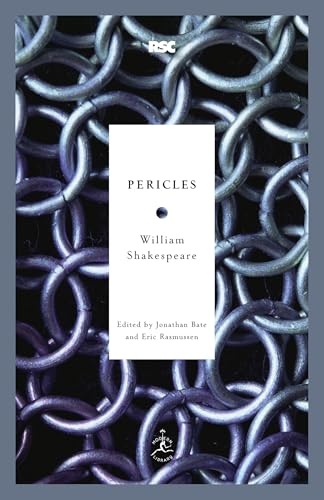
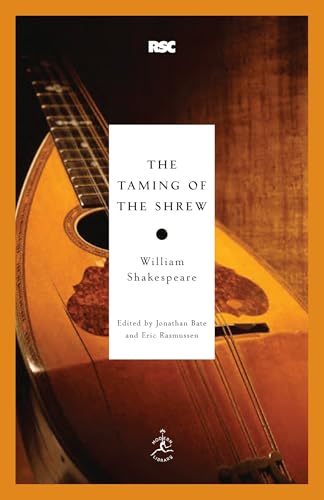
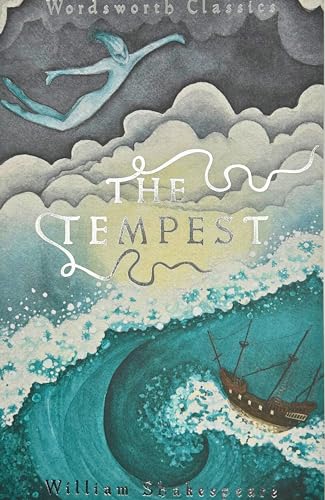


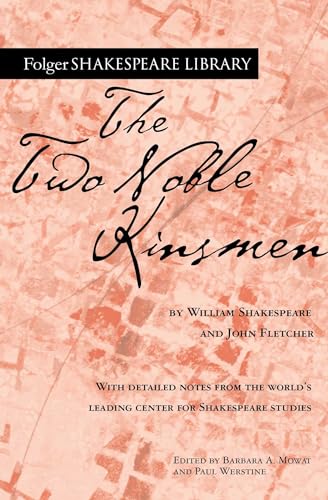

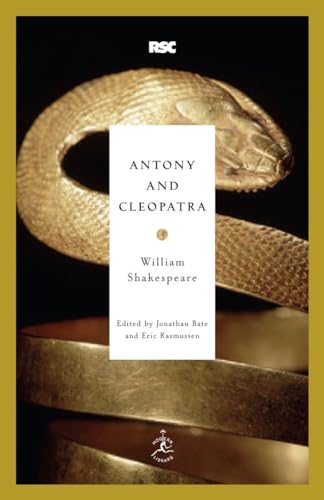
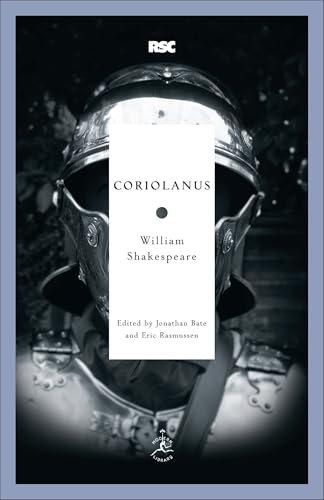
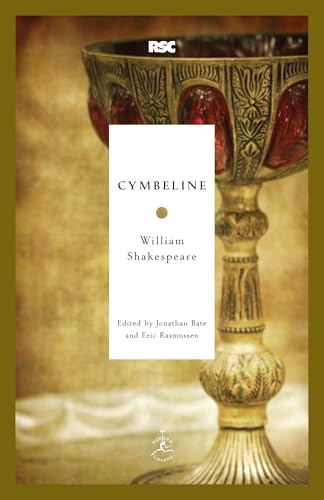

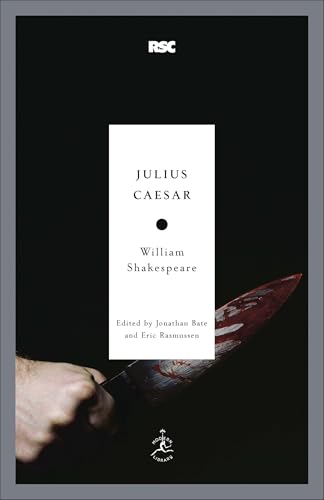

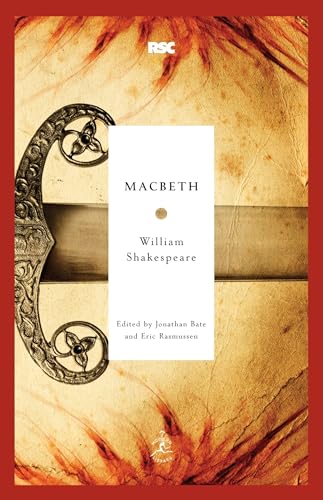
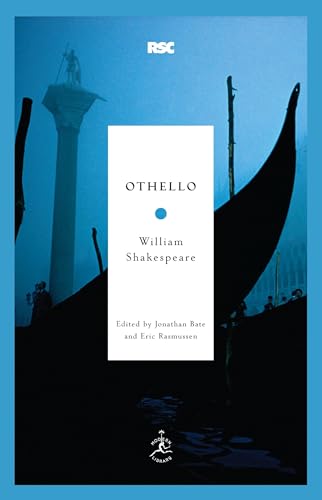
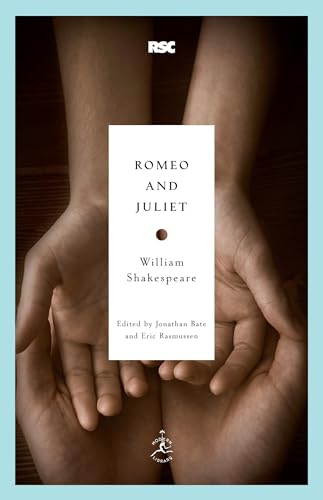
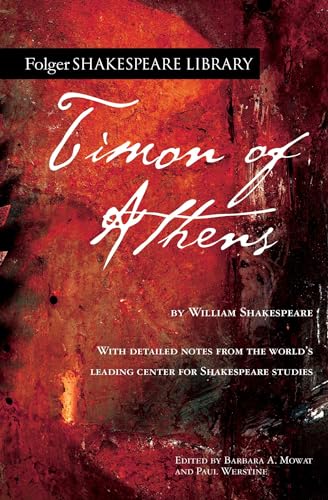
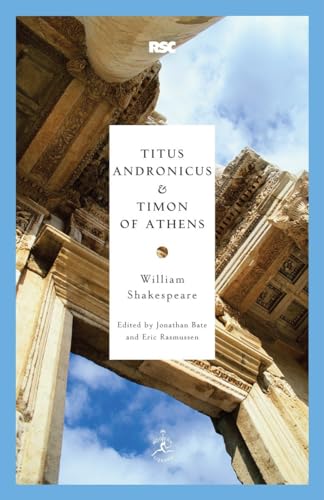
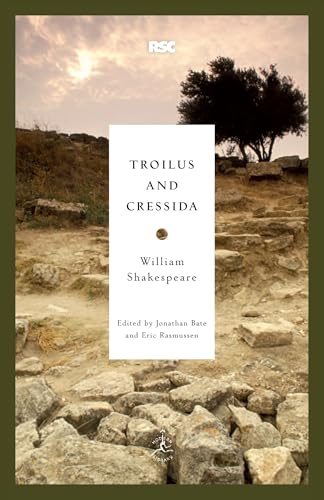


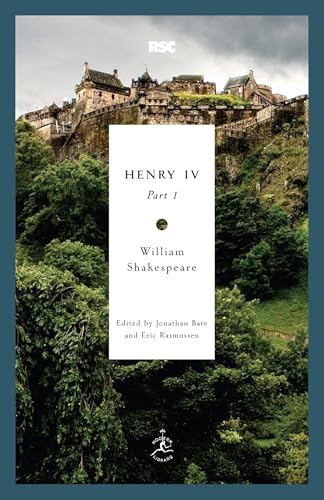
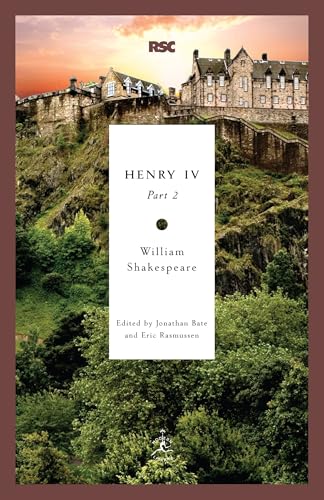
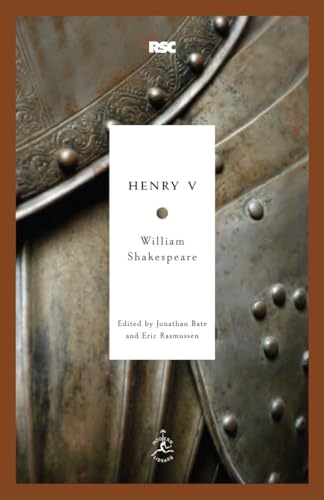


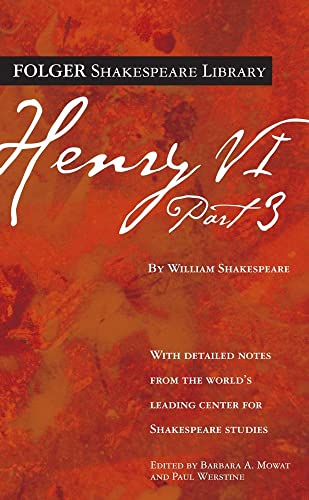


This is an mpressive list! I had no idea Shakespeare wrote this many plays. Confession: I’ve never read any of them. I’ve always been intimidated by him, so to conquer this fear, I’ve signed up for the challenge to read all of his plays in a year. 😬
We can do it!! I think it’s going to be a great year and such a memorable experience.
I will join you. I’ve not read the plays, but have seen performances and seen movies. I live in the Denver area and was able to see them performed at the Colorado Shakespeare Festival. It was played in the outdoor theatre on the campus of University of Colorado, Boulder. A memorable one was The Tempest with lightning happening over the Flatiron mountains range!
The Tempest is one of my favourites, so I would just love to have been there! Thank you for joining my crazy scheme!
Since it would be helpful for writing my historical romance novels, I would like to join the challenge. Do I have to give my real name?
No need! Pen names are great.
I haven’t read much Shakespeare since my college years. Anxious to do this. Please include me.
Glad you’re joining us!
I have read all the dramas and sonnets, but none of the comedies. Please count me in!
Glad you’re joining us!
Just checking – I believe I signed up, but I haven’t heard anything about the challenge since then. Am I in/did I miss an update post?
I think I’ve got you on track now. Did you receive the welcome email?
Is it too late to join the Shakespeare in a year?? If not, how do I sign up?
Not too late! I added you. Please let me know if you don’t see the welcome email.
I signed up in December and haven’t heard back or gotten the welcome email
I’m so sorry, I don’t know why that was the case! I think I have added you successfully now, so you should see a welcome email shortly. Please let me know if it’s not in your inbox or spam!
I got it today thank you